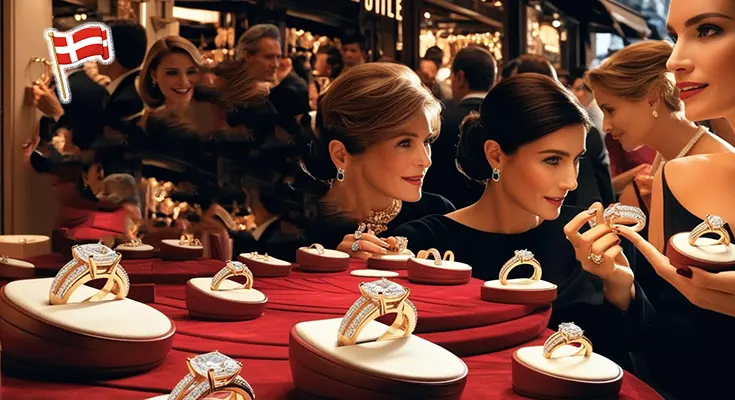The Royal Ring, an iconic piece of jewelry in Denmark’s royal history, has captivated the imagination of countless visitors to the country. With its fascinating connection to Danish royalty, the engagement ring has become a symbol of the nation’s rich heritage and cultural allure. Visitors flock to Denmark not just to witness the grandeur of its palaces, castles, and scenic landscapes, but also to catch a glimpse of the Royal Ring, a symbol of love and commitment tied to the country’s royal family. As a result, Denmark has seen a rise in tourism, especially from those with an interest in royal history and royal families.
The story behind the Royal Ring is more than just a tale of royalty; it intertwines with Denmark’s broader cultural history, adding layers of intrigue to the nation’s tourism offerings. The ring, often displayed in museums or featured in royal exhibitions, is one of the many treasures that attract international tourists. With such a historic piece tied to modern-day events, particularly engagements and weddings of the Danish royals, people are naturally curious to learn more. This connection not only fuels interest in Denmark’s monarchy but also in the nation as a whole, prompting a wave of international visitors eager to explore the sites where history was made.
The Royal Ring’s cultural significance is amplified by its links to key royal events, such as the engagements and weddings of Denmark’s crown princes and princesses. These highly publicized occasions often involve extravagant ceremonies, and the ring itself becomes a focal point, a symbol of continuity and tradition. The attention generated by these events drives tourists to Denmark, who come not just to admire the royal family but also to learn about the historical significance behind such moments. Visitors may travel to see the royal residences, such as Amalienborg Palace, where the royal family resides, or visit the Danish National Museum, where historical artifacts, including royal regalia, are preserved and displayed.
Moreover, Denmark’s royal heritage is deeply woven into the fabric of the country’s national identity, making royal-related tourism an essential part of the experience for many visitors. The Royal Ring is one piece of this larger cultural mosaic, and it represents an invitation to tourists to experience the nation’s legacy. It is no surprise that many people planning to visit Denmark are eager to experience firsthand the beauty and charm of royal traditions. Museums, royal palaces, and official residences across the country serve as central attractions, and with the Royal Ring featured in exhibitions, it continues to be a major draw for tourists seeking a deeper understanding of Denmark’s royal history.
The rise in tourists has also benefitted the Danish economy, as the country has tailored its tourism offerings to capitalize on royal-related attractions. Tour operators offer specialized tours that include visits to royal landmarks and exhibitions, ensuring that tourists can immerse themselves in the stories of Denmark’s monarchy. As visitors learn more about the significance of the Royal Ring and its place in Denmark’s royal traditions, they leave with a greater appreciation for the country’s historical depth and cultural heritage.
In conclusion, the Royal Ring has made a substantial impact on Denmark’s tourism sector by attracting visitors eager to explore the history, culture, and tradition of Danish royalty. As more people become interested in the royal family’s engagements and the story behind the iconic engagement ring, Denmark remains a top destination for those seeking to experience the elegance and grandeur of the Danish monarchy. With each new generation of visitors, the Royal Ring continues to shine as a symbol of Denmark’s timeless appeal.



